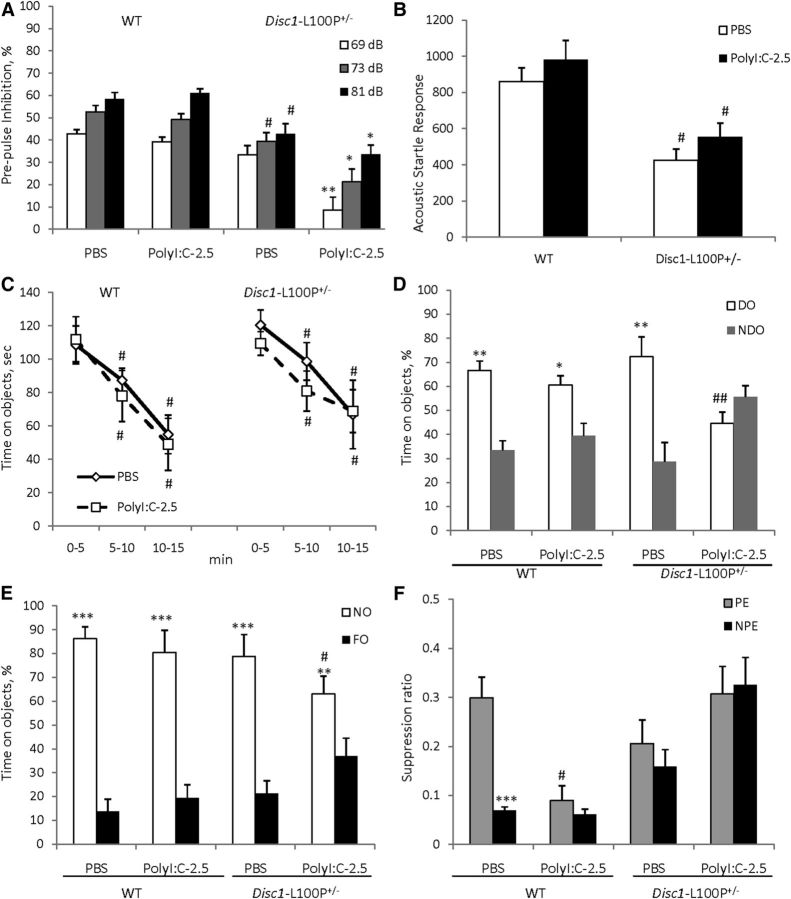Figure 4.
The effects of prenatal immune activation by 2.5 mg/kg of polyI:C on PPI (A), ASR (B), object recognition (C–E), and LI (F) in WT and Disc1-L100P+/− mice. A, Only DISC1–L100P+/− offspring born to mothers injected with 2.5 mg/kg of polyI:C showed a PPI deficit, with no effect on MIA on the startle response (B) (N = 7–16 per each group). Mice of all experimental groups showed comparable habituation to objects (C), but immune-challenged Disc1-L100P+/− offspring showed a spatial object recognition deficit (D), equally preferring NDO and DO objects; #p < 0.01, in comparison with the first time interval during habituation within each experimental group. Mice of all experimental groups showed comparable novel object recognition (E). N = 8–11 per group; *p < 0.05; **p < 0.01; ***p < 0.001, compared with the time spent on either NDO or FO within each experimental group; #p ≤ 0.05; ##p < 0.01, in comparison with PBS/Disc1-L100P+/− mice. F, MIA with 2.5 mg/kg of polyI:C disrupted LI in both WT and Disc1-L100P+/− offspring. Mean suppression ratios of the PE and NPE mice conditioned with two conditioned stimulus—unconditioned stimulus trials and given 40 pre-exposures (N = 6–12 per each group). ***p < 0.001, in comparison with PE within PBS-WT experimental group; #p < 0.05, in comparison with PE PBS-WT control mice.

